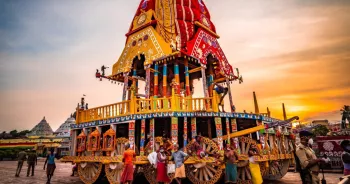Top 10 Things to do in Aurangabad
One of the most historical and well-travelled cities in Maharashtra, Aurangabad is the best place for history lovers. It is one of the most important - Tripclap
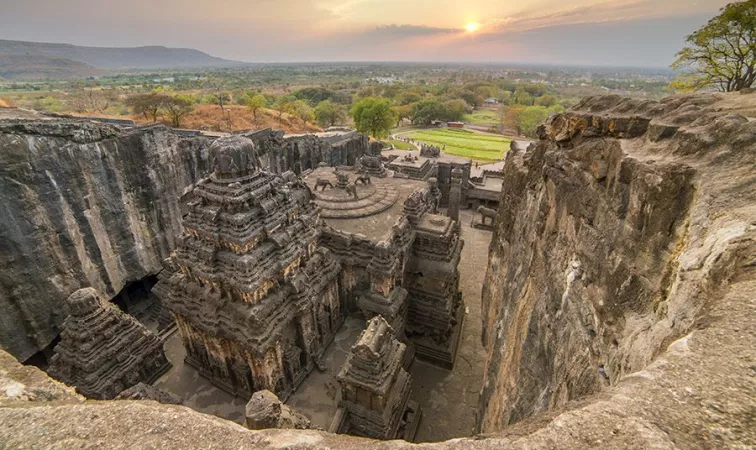
One of the most historical and well-travelled cities in Maharashtra, Aurangabad is the best place for history lovers. It is one of the most important tourist destinations in the state and is well known for the Ajanta and Ellora Caves, which are UNESCO World Heritage Sites. The city is also home to the Bibi Ka Maqbara, a tomb built in memory of Aurangzeb's wife.
Aurangabad has one of the underlying histories that draws tourists from all over the world. The city of Aurangabad was founded in 1610 by Malik Ambar, a general in the service of the Mughal Emperor, Jahangir. Malik Ambar was a high-ranking official in the Mughal court and had a considerable military force at his disposal. He was originally from the Deccan region and had distinguished himself in a series of campaigns there. When Jahangir was looking for someone to govern the Deccan region, Malik Ambar was a natural choice. Malik Ambar decided to make the city of Aurangabad his capital. He laid out the city in an orderly fashion and constructed a number of palaces and other buildings. He also built a strong fortress to protect the city. Malik Ambar was a shrewd administrator, and he made Aurangabad into a prosperous and thriving city.
Aurangabad remained under the rule of the Mughals until the mid-18th century. In 1707, the Mughal Emperor, Aurangzeb, died, and the Mughal Empire began to collapse. In 1724, the Nizam of Hyderabad, Asaf Jah, conquered Aurangabad and made it into his capital. The Nizams ruled Hyderabad and the surrounding region until 1948, when India gained independence from British rule.
Today, Aurangabad is now a major city in the state of Maharashtra and is an important commercial and cultural centre.
Table of Content
- Explore the Aurangabad Caves
- Visit the iconic Bibi-Ka-Maqbara
- Wander around the Ajanta Caves
- Introspect the finest Ellora Caves
- Find yourself in the Pitalkhora Caves
- Climb atop to the Daulatabad Fort
- Pay your homage at the Grishneshwar temple
- Enlighten yourself at the Shrimant Chatrapati Shivaji Museum
- Spend a quiet evening at the Salim Ali Lake
- Shopping and eating in Aurangabad
Aurangabad, Aurangabad Cantonment Tour Packages
Per Person
10,200
*EXCLUDING APPLICABLE TAXES 4.9 Ratings
( 200 Reviews )
( 200 Reviews )
Per Person
20,780
*EXCLUDING APPLICABLE TAXES Per Person
15,980
*EXCLUDING APPLICABLE TAXES Per Person
22,490
*EXCLUDING APPLICABLE TAXES Total
1,22,422
*EXCLUDING APPLICABLE TAXES Per Person
17,980
*EXCLUDING APPLICABLE TAXES Per Person
5,08,904
*EXCLUDING APPLICABLE TAXES 4.1 Ratings
( 56 Reviews )
( 56 Reviews )
Total
30,000
*EXCLUDING APPLICABLE TAXES Per Person
25,980
*EXCLUDING APPLICABLE TAXES Per Person
17,126
*EXCLUDING APPLICABLE TAXES 4.9 Ratings
( 200 Reviews )
( 200 Reviews )
Explore the Aurangabad Caves
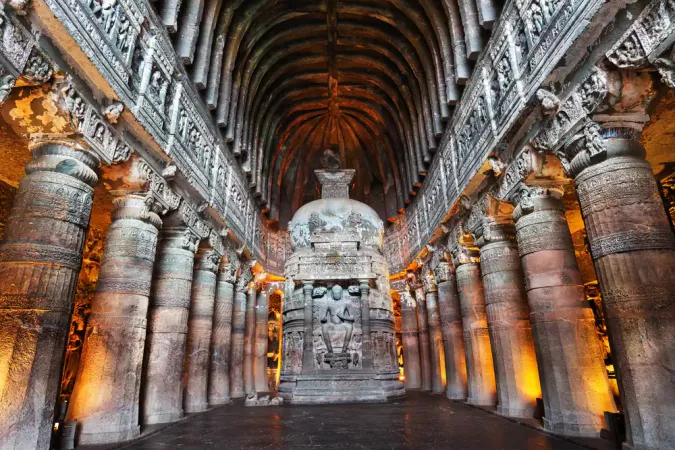 View Gallery - 11
View Gallery - 11 Aurangabad is known for its caves and specifically the underlying history, which make the place an interesting place to visit. The Aurangabad Caves are a group of caves located in Aurangabad, which are considered to be the finest surviving examples of carved Buddhist cave art in India. The caves were built in the 2nd century AD by the Satvahanas, and later used by the Vakataka dynasty. The caves were discovered in 1819 by John Smith, an officer in the British East India Company. Speaking of its architectural brilliance, the caves are carved out of the basalt cliff and date back to the 2nd century BC. The caves are an important Buddhist site and contain a number of sculptures and inscriptions.
Places to visit in Aurangabad
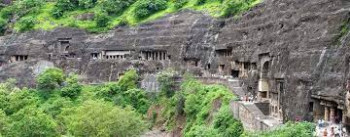
Aurangabad Caves
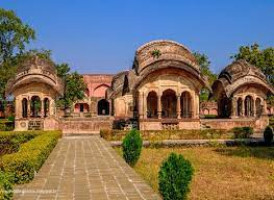
Bani Begum Garden
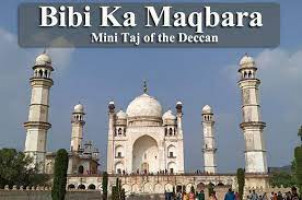
Bibi Ka Maqbara
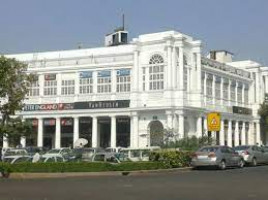
Connaught
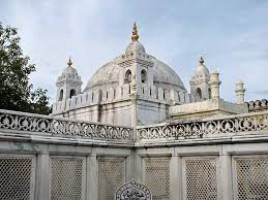
Dargah Of Pir Ismail
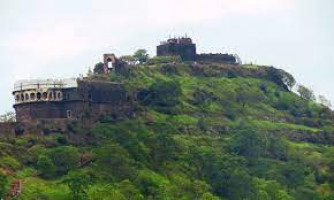
Daulatabad Fort
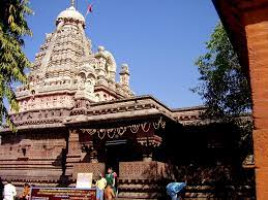
Ghrishneshwar Temple Ellora
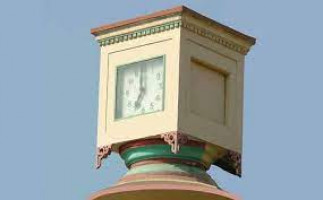
Gul Mandi
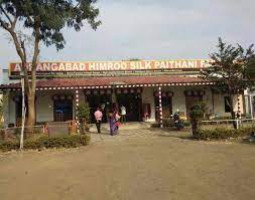
Himroo Factory
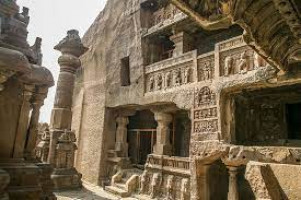
Jain Caves Ellora
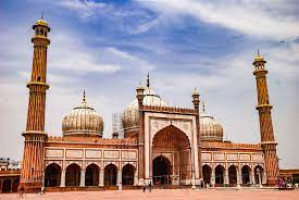
Jama Masjid
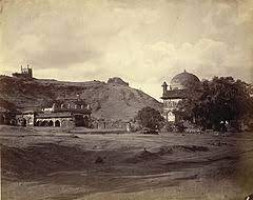
Khuldabad
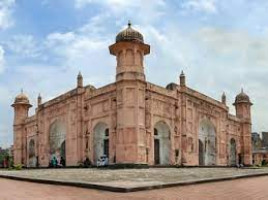
Killa Arak
Panchakki
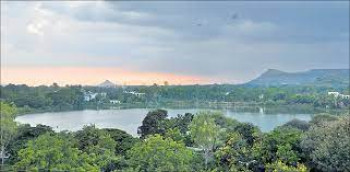
Salim Ali Lake
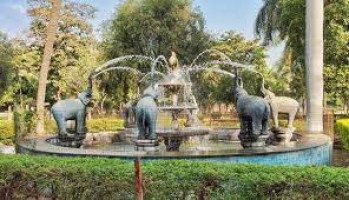
Siddharth Garden And Zoo
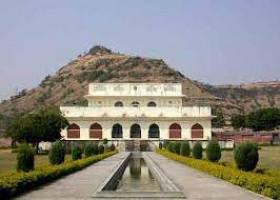
Sunheri Mahal
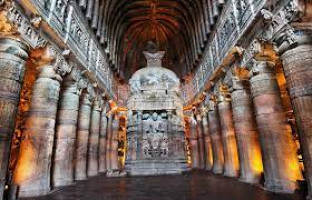
The Ajanta Caves
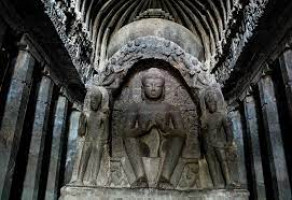
The Buddhist Caves Ellora
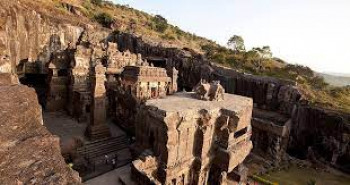
The Ellora Caves
Bhadra Maruti
Per Person
5,08,904
*EXCLUDING APPLICABLE TAXES 4.1 Ratings
( 56 Reviews )
( 56 Reviews )
Per Person
10,200
*EXCLUDING APPLICABLE TAXES 4.9 Ratings
( 200 Reviews )
( 200 Reviews )
Per Person
20,780
*EXCLUDING APPLICABLE TAXES Total
1,22,422
*EXCLUDING APPLICABLE TAXES Per Person
15,980
*EXCLUDING APPLICABLE TAXES Per Person
22,490
*EXCLUDING APPLICABLE TAXES Per Person
17,980
*EXCLUDING APPLICABLE TAXES Per Person
17,126
*EXCLUDING APPLICABLE TAXES 4.9 Ratings
( 200 Reviews )
( 200 Reviews )
Total
30,000
*EXCLUDING APPLICABLE TAXES Per Person
25,980
*EXCLUDING APPLICABLE TAXES Visit the iconic Bibi-Ka-Maqbara
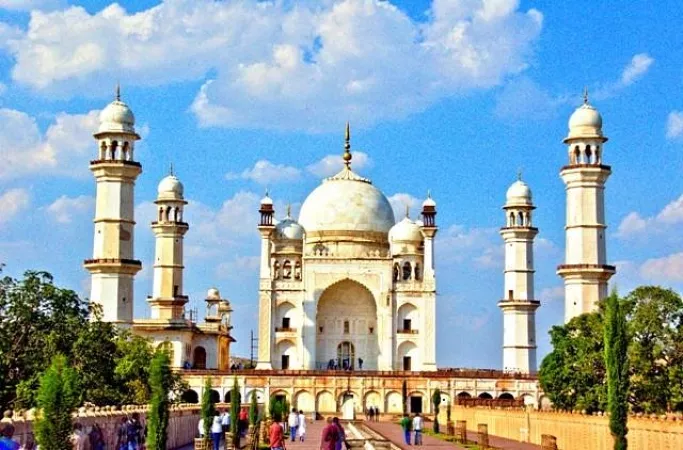 View Gallery - 11
View Gallery - 11 Often called as the "Mini Taj Mahal." Bibi-Ka-Maqbara is considered to be one of the best examples of Mughal architecture in India. It is one of the most visited places in Aurangabad and was commissioned by the Mughal emperor Aurangzeb in memory of his mother, Dilras Banu Begum. The construction began in the year 1651, and later, in 1661, it was completed. The most interesting fact about the monument is that the Bibi-Ka-Maqbara replicates the design of the Taj Mahal.
Understanding its significance, the Bibi-a-Maqbara was the first structure built by Aurangzeb in Aurangabad, the capital of his empire. Aurangzeb was crowned emperor in 1658, after the death of his father, Shah Jahan. In 1660, Aurangzeb marched to Aurangabad to take control of his empire. He was accompanied by his mother, Dilras Banu Begum. Aurangzeb was so devoted to his mother that he decided to build her a tomb similar in design to the Taj Mahal, the tomb of his father.
The Bibi-Ka-Maqbara is made of red sandstone and marble. The exterior is decorated with carved stone screens and false domes. The interior is decorated with inlaid marble panels and carved stone screens. The tomb is surmounted by a marble dome.
Places to visit in Aurangabad

Aurangabad Caves

Bani Begum Garden

Bibi Ka Maqbara

Connaught

Dargah Of Pir Ismail

Daulatabad Fort

Ghrishneshwar Temple Ellora

Gul Mandi

Himroo Factory

Jain Caves Ellora

Jama Masjid

Khuldabad

Killa Arak
Panchakki

Salim Ali Lake

Siddharth Garden And Zoo

Sunheri Mahal

The Ajanta Caves

The Buddhist Caves Ellora

The Ellora Caves
Bhadra Maruti
Per Person
5,08,904
*EXCLUDING APPLICABLE TAXES 4.1 Ratings
( 56 Reviews )
( 56 Reviews )
Per Person
10,200
*EXCLUDING APPLICABLE TAXES 4.9 Ratings
( 200 Reviews )
( 200 Reviews )
Per Person
20,780
*EXCLUDING APPLICABLE TAXES Total
1,22,422
*EXCLUDING APPLICABLE TAXES Per Person
15,980
*EXCLUDING APPLICABLE TAXES Per Person
22,490
*EXCLUDING APPLICABLE TAXES Per Person
17,980
*EXCLUDING APPLICABLE TAXES Per Person
17,126
*EXCLUDING APPLICABLE TAXES 4.9 Ratings
( 200 Reviews )
( 200 Reviews )
Total
30,000
*EXCLUDING APPLICABLE TAXES Per Person
25,980
*EXCLUDING APPLICABLE TAXES Wander around the Ajanta Caves
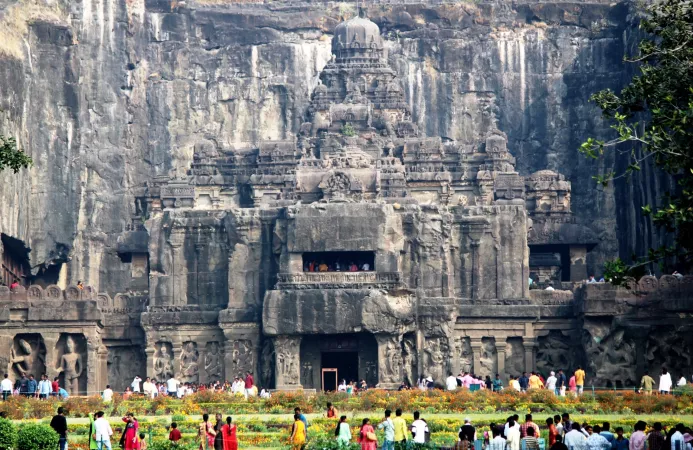 View Gallery - 11
View Gallery - 11 Another exemplary brilliance site in Aurangabad is the Ajanta Caves. The Ajanta Caves are a series of Buddhist cave temples dating from the 2nd century BCE to the 7th century CE, carved into a horseshoe-shaped cliff in the Aurangabad district of Maharashtra, India. The caves include paintings and sculptures representing the Mahayana Buddhist tradition and the Hindu pantheon.
The caves were built in two phases. The first group of caves were built around the 2nd century BCE, while the second group of caves were built around the 5th or 6th century CE.
It was in the year 1819 that the Ajanta Caves were first discovered by a British officer, John Smith.
The Ajanta Caves are a UNESCO World Heritage Site and are considered to be one of the most important Buddhist sites in the world. The caves are a major tourist attraction and attract tens of thousands of visitors every year.
Places to visit in Aurangabad

Aurangabad Caves

Bani Begum Garden

Bibi Ka Maqbara

Connaught

Dargah Of Pir Ismail

Daulatabad Fort

Ghrishneshwar Temple Ellora

Gul Mandi

Himroo Factory

Jain Caves Ellora

Jama Masjid

Khuldabad

Killa Arak
Panchakki

Salim Ali Lake

Siddharth Garden And Zoo

Sunheri Mahal

The Ajanta Caves

The Buddhist Caves Ellora

The Ellora Caves
Bhadra Maruti
Per Person
5,08,904
*EXCLUDING APPLICABLE TAXES 4.1 Ratings
( 56 Reviews )
( 56 Reviews )
Per Person
10,200
*EXCLUDING APPLICABLE TAXES 4.9 Ratings
( 200 Reviews )
( 200 Reviews )
Per Person
20,780
*EXCLUDING APPLICABLE TAXES Total
1,22,422
*EXCLUDING APPLICABLE TAXES Per Person
15,980
*EXCLUDING APPLICABLE TAXES Per Person
22,490
*EXCLUDING APPLICABLE TAXES Per Person
17,980
*EXCLUDING APPLICABLE TAXES Per Person
17,126
*EXCLUDING APPLICABLE TAXES 4.9 Ratings
( 200 Reviews )
( 200 Reviews )
Total
30,000
*EXCLUDING APPLICABLE TAXES Per Person
25,980
*EXCLUDING APPLICABLE TAXES Introspect the finest Ellora Caves
 View Gallery - 11
View Gallery - 11 Just a distance away from the Ajanta Caves, the Ellora Caves are yet another must-visit place in Aurangabad. The place is a set of 34 caves carved out of the vertical face of the Charanandri hills, north-west of Aurangabad. The caves date back to between the 6th and 10th centuries AD, and represent three of the four major religious faiths of India: Hinduism, Buddhism, and Jainism. The caves were originally excavated for Buddhist and Jain monks, but were later used by Hindu Brahmins and royalty.
The Ellora caves were first mentioned in the 17th century by the English traveller John Smith, who remarked that they were "the work of the Devil and not of man". The caves were rediscovered in the 19th century by British officers, who were astonished by their beauty and craftsmanship. The Ellora Caves are a UNESCO World Heritage Site and are visited by thousands of tourists every year.
Places to visit in Aurangabad

Aurangabad Caves

Bani Begum Garden

Bibi Ka Maqbara

Connaught

Dargah Of Pir Ismail

Daulatabad Fort

Ghrishneshwar Temple Ellora

Gul Mandi

Himroo Factory

Jain Caves Ellora

Jama Masjid

Khuldabad

Killa Arak
Panchakki

Salim Ali Lake

Siddharth Garden And Zoo

Sunheri Mahal

The Ajanta Caves

The Buddhist Caves Ellora

The Ellora Caves
Bhadra Maruti
Per Person
5,08,904
*EXCLUDING APPLICABLE TAXES 4.1 Ratings
( 56 Reviews )
( 56 Reviews )
Per Person
10,200
*EXCLUDING APPLICABLE TAXES 4.9 Ratings
( 200 Reviews )
( 200 Reviews )
Per Person
20,780
*EXCLUDING APPLICABLE TAXES Total
1,22,422
*EXCLUDING APPLICABLE TAXES Per Person
15,980
*EXCLUDING APPLICABLE TAXES Per Person
22,490
*EXCLUDING APPLICABLE TAXES Per Person
17,980
*EXCLUDING APPLICABLE TAXES Per Person
17,126
*EXCLUDING APPLICABLE TAXES 4.9 Ratings
( 200 Reviews )
( 200 Reviews )
Total
30,000
*EXCLUDING APPLICABLE TAXES Per Person
25,980
*EXCLUDING APPLICABLE TAXES Find yourself in the Pitalkhora Caves
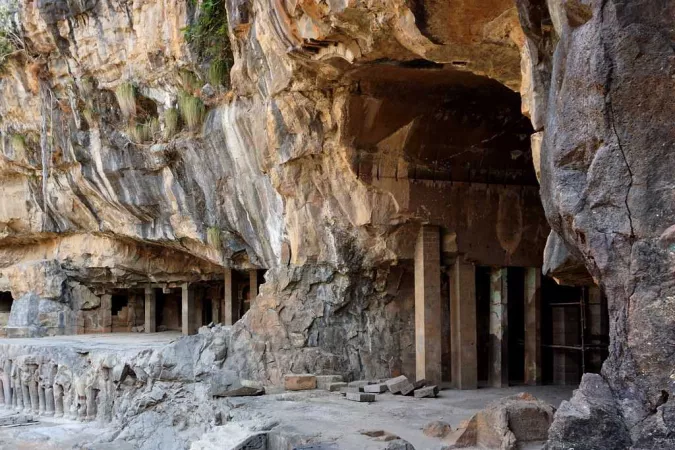 View Gallery - 11
View Gallery - 11 Another important cave destination in Aurangabad is the Pitalkhora Caves. It is a group of 24 rock-cut caves located in the village of Pitalkhora, about 26 km from the city of Aurangabad. The caves were dug out of the basalt cliff in the 2nd century BC and are thought to have been used by the Jain monks. The caves are numbered 1 to 24 from east to west.
The caves were discovered by A. H. Longhurst in 1917, who published a report on them the same year. The caves were further excavated by G. R. Malkani in the 1930s. The caves are decorated with carvings of Jain tirthankaras and yakshas. The most notable feature of the caves is the presence of a large number of inscriptions in Brahmi script.
Places to visit in Aurangabad

Aurangabad Caves

Bani Begum Garden

Bibi Ka Maqbara

Connaught

Dargah Of Pir Ismail

Daulatabad Fort

Ghrishneshwar Temple Ellora

Gul Mandi

Himroo Factory

Jain Caves Ellora

Jama Masjid

Khuldabad

Killa Arak
Panchakki

Salim Ali Lake

Siddharth Garden And Zoo

Sunheri Mahal

The Ajanta Caves

The Buddhist Caves Ellora

The Ellora Caves
Bhadra Maruti
Per Person
5,08,904
*EXCLUDING APPLICABLE TAXES 4.1 Ratings
( 56 Reviews )
( 56 Reviews )
Per Person
10,200
*EXCLUDING APPLICABLE TAXES 4.9 Ratings
( 200 Reviews )
( 200 Reviews )
Per Person
20,780
*EXCLUDING APPLICABLE TAXES Total
1,22,422
*EXCLUDING APPLICABLE TAXES Per Person
15,980
*EXCLUDING APPLICABLE TAXES Per Person
22,490
*EXCLUDING APPLICABLE TAXES Per Person
17,980
*EXCLUDING APPLICABLE TAXES Per Person
17,126
*EXCLUDING APPLICABLE TAXES 4.9 Ratings
( 200 Reviews )
( 200 Reviews )
Total
30,000
*EXCLUDING APPLICABLE TAXES Per Person
25,980
*EXCLUDING APPLICABLE TAXES Climb atop to the Daulatabad Fort
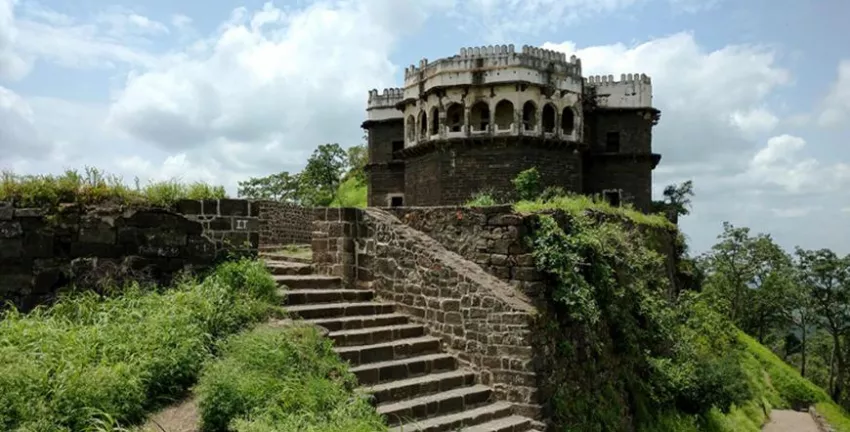 View Gallery - 11
View Gallery - 11 Next on your itinerary is the Daulatabad Fort, one of the most popular tourist destinations in the city. The fort is also known as the "Fort of Fortune" and is believed to have been built by the Yadava dynasty in the 12th century. The fort has a long and illustrious history and has been captured and recaptured by several dynasties over the centuries.
The fort was originally known as Devagiri and was the capital of the Yadava dynasty. In 1327, the fort was captured by the Delhi Sultanate and was renamed Daulatabad. The fort was then captured by the Bahmani Sultanate in 1428 and was renamed Gulbarga. In 1453, the fort was captured by the Bahmani Sultanate and was renamed Bidar. In 1518, the fort was captured by the Mughal Emperor, Babur, and was renamed Aurangabad.
The fort is a massive structure and is spread over an area of more than 5 square kilometres. The fort has a number of palaces, mosques, and tombs built by the various dynasties that captured it. The fort is also home to a number of ancient temples and is a popular destination for tourists and pilgrims. It is one of the most impressive forts in the region. It is built on a hill and is surrounded by a moat with numerous large bastions and gateways. The fort is now in ruins, but it is still an impressive sight.
Places to visit in Aurangabad

Aurangabad Caves

Bani Begum Garden

Bibi Ka Maqbara

Connaught

Dargah Of Pir Ismail

Daulatabad Fort

Ghrishneshwar Temple Ellora

Gul Mandi

Himroo Factory

Jain Caves Ellora

Jama Masjid

Khuldabad

Killa Arak
Panchakki

Salim Ali Lake

Siddharth Garden And Zoo

Sunheri Mahal

The Ajanta Caves

The Buddhist Caves Ellora

The Ellora Caves
Bhadra Maruti
Per Person
5,08,904
*EXCLUDING APPLICABLE TAXES 4.1 Ratings
( 56 Reviews )
( 56 Reviews )
Per Person
10,200
*EXCLUDING APPLICABLE TAXES 4.9 Ratings
( 200 Reviews )
( 200 Reviews )
Per Person
20,780
*EXCLUDING APPLICABLE TAXES Total
1,22,422
*EXCLUDING APPLICABLE TAXES Per Person
15,980
*EXCLUDING APPLICABLE TAXES Per Person
22,490
*EXCLUDING APPLICABLE TAXES Per Person
17,980
*EXCLUDING APPLICABLE TAXES Per Person
17,126
*EXCLUDING APPLICABLE TAXES 4.9 Ratings
( 200 Reviews )
( 200 Reviews )
Total
30,000
*EXCLUDING APPLICABLE TAXES Per Person
25,980
*EXCLUDING APPLICABLE TAXES Pay your homage at the Grishneshwar temple
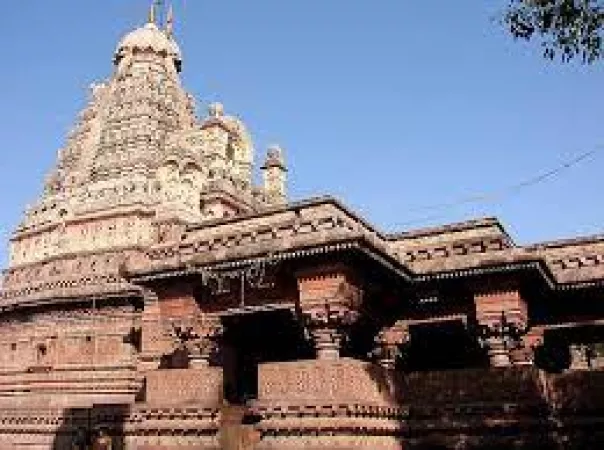 View Gallery - 11
View Gallery - 11 One of the popular temple attractions in the Aurangabad is the Grishneshwar Temple. The temple was built in the thirteenth century by the ruler of the Deccan region, Malik Ambar. Grishneshwar Jyotirlinga is one of the 12 Jyotirlingas in India.
The temple is a simple, three-cell temple, built in the Nagara style of architecture. The temple is decorated with carvings of gods, goddesses, and animals. The temple has a large Nandi (bull) sculpture in front of it. The temple is a popular tourist destination and is visited by thousands of pilgrims each year.
Places to visit in Aurangabad

Aurangabad Caves

Bani Begum Garden

Bibi Ka Maqbara

Connaught

Dargah Of Pir Ismail

Daulatabad Fort

Ghrishneshwar Temple Ellora

Gul Mandi

Himroo Factory

Jain Caves Ellora

Jama Masjid

Khuldabad

Killa Arak
Panchakki

Salim Ali Lake

Siddharth Garden And Zoo

Sunheri Mahal

The Ajanta Caves

The Buddhist Caves Ellora

The Ellora Caves
Bhadra Maruti
Per Person
5,08,904
*EXCLUDING APPLICABLE TAXES 4.1 Ratings
( 56 Reviews )
( 56 Reviews )
Per Person
10,200
*EXCLUDING APPLICABLE TAXES 4.9 Ratings
( 200 Reviews )
( 200 Reviews )
Per Person
20,780
*EXCLUDING APPLICABLE TAXES Total
1,22,422
*EXCLUDING APPLICABLE TAXES Per Person
15,980
*EXCLUDING APPLICABLE TAXES Per Person
22,490
*EXCLUDING APPLICABLE TAXES Per Person
17,980
*EXCLUDING APPLICABLE TAXES Per Person
17,126
*EXCLUDING APPLICABLE TAXES 4.9 Ratings
( 200 Reviews )
( 200 Reviews )
Total
30,000
*EXCLUDING APPLICABLE TAXES Per Person
25,980
*EXCLUDING APPLICABLE TAXES Enlighten yourself at the Shrimant Chatrapati Shivaji Museum
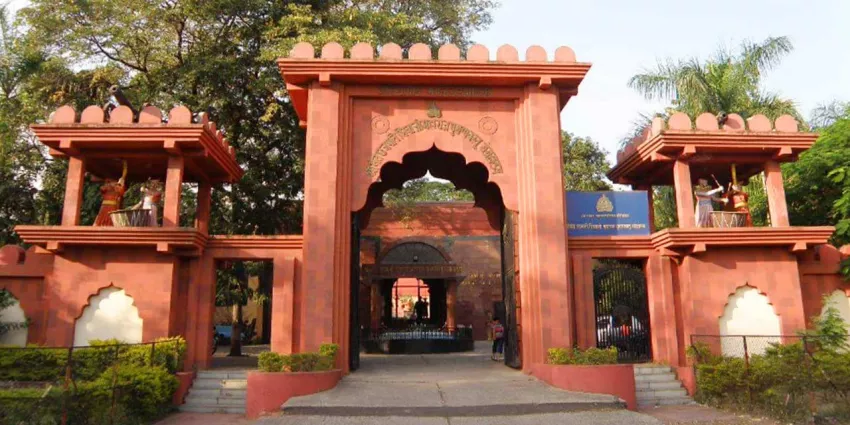 View Gallery - 11
View Gallery - 11 Inaugurated in the year of 1997, the Shrimant Chatrapati Shivaji Museum is situated in the heart of Aurangabad city, dedicated to the Maratha king, Chatrapati Shivaji.
The museum is spread over an area of 2,000 square metres and houses a collection of artefacts associated with Chatrapati Shivaji, including weapons, armour, paintings, coins, and manuscripts.
It was inaugurated by the then Chief Minister of Maharashtra, Mr. Sharad Pawar, on December 15th, 2001. The museum is housed in a beautiful building which is a replica of the Raigad Fort, the capital of Shivaji, which is an instant attraction for tourists.
Drop by here anytime between 9:00 am to 6:00 pm.
Places to visit in Aurangabad

Aurangabad Caves

Bani Begum Garden

Bibi Ka Maqbara

Connaught

Dargah Of Pir Ismail

Daulatabad Fort

Ghrishneshwar Temple Ellora

Gul Mandi

Himroo Factory

Jain Caves Ellora

Jama Masjid

Khuldabad

Killa Arak
Panchakki

Salim Ali Lake

Siddharth Garden And Zoo

Sunheri Mahal

The Ajanta Caves

The Buddhist Caves Ellora

The Ellora Caves
Bhadra Maruti
Per Person
5,08,904
*EXCLUDING APPLICABLE TAXES 4.1 Ratings
( 56 Reviews )
( 56 Reviews )
Per Person
10,200
*EXCLUDING APPLICABLE TAXES 4.9 Ratings
( 200 Reviews )
( 200 Reviews )
Per Person
20,780
*EXCLUDING APPLICABLE TAXES Total
1,22,422
*EXCLUDING APPLICABLE TAXES Per Person
15,980
*EXCLUDING APPLICABLE TAXES Per Person
22,490
*EXCLUDING APPLICABLE TAXES Per Person
17,980
*EXCLUDING APPLICABLE TAXES Per Person
17,126
*EXCLUDING APPLICABLE TAXES 4.9 Ratings
( 200 Reviews )
( 200 Reviews )
Total
30,000
*EXCLUDING APPLICABLE TAXES Per Person
25,980
*EXCLUDING APPLICABLE TAXES Spend a quiet evening at the Salim Ali Lake
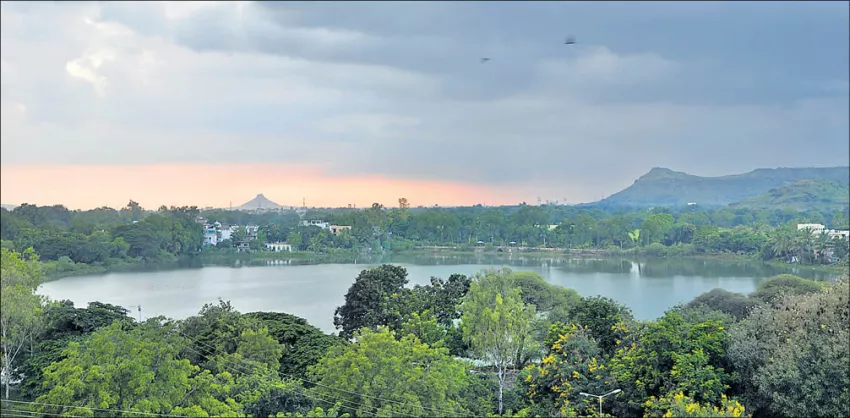 View Gallery - 11
View Gallery - 11 Salim Ali Lake is one of the most popular tourist spots in the city. It is also the largest lake in Aurangabad. The lake is named after the Indian ornithologist Salim Ali.
The lake was built in the 18th century by the Mughal Emperor Aurangzeb and was originally known as "Aurangzeb Lake." The lake is located in the heart of the city and is spread over an area of 70 acres.
The lake is a popular spot for sightseeing and recreation. It is also a popular spot for boating and is surrounded by a green belt that is home to a variety of birds. The lake was constructed in the early 1990s to meet the water needs of the city.
Places to visit in Aurangabad

Aurangabad Caves

Bani Begum Garden

Bibi Ka Maqbara

Connaught

Dargah Of Pir Ismail

Daulatabad Fort

Ghrishneshwar Temple Ellora

Gul Mandi

Himroo Factory

Jain Caves Ellora

Jama Masjid

Khuldabad

Killa Arak
Panchakki

Salim Ali Lake

Siddharth Garden And Zoo

Sunheri Mahal

The Ajanta Caves

The Buddhist Caves Ellora

The Ellora Caves
Bhadra Maruti
Per Person
5,08,904
*EXCLUDING APPLICABLE TAXES 4.1 Ratings
( 56 Reviews )
( 56 Reviews )
Per Person
10,200
*EXCLUDING APPLICABLE TAXES 4.9 Ratings
( 200 Reviews )
( 200 Reviews )
Per Person
20,780
*EXCLUDING APPLICABLE TAXES Total
1,22,422
*EXCLUDING APPLICABLE TAXES Per Person
15,980
*EXCLUDING APPLICABLE TAXES Per Person
22,490
*EXCLUDING APPLICABLE TAXES Per Person
17,980
*EXCLUDING APPLICABLE TAXES Per Person
17,126
*EXCLUDING APPLICABLE TAXES 4.9 Ratings
( 200 Reviews )
( 200 Reviews )
Total
30,000
*EXCLUDING APPLICABLE TAXES Per Person
25,980
*EXCLUDING APPLICABLE TAXES Shopping and eating in Aurangabad
 View Gallery - 11
View Gallery - 11 Well, you must be overwhelmed exploring the culture and history of Aurangabad, so why not detoxify yourself by shopping and relishing some authentic dishes? To start with, Aurangabad holds many shopping options with a mixture of modern and traditional markets, and shoppers can find a wide range of products available. The major shopping areas in Aurangabad include the MG Road Market, the Sarafa Bazaar, and the Paithan Market.
To be more precise, the MG Road Market is a modern shopping area with a variety of stores selling clothes, electronics, and other products. The Sarafa Bazaar is a traditional market with a large number of small shops selling a wide range of products, including jewellery, spices, and clothes. The Paithan Market is a traditional market that specialises in selling handicrafts and other products made in the Paithan region.
Now talking about eateries in Aurangabad, there are plenty of restaurants in Aurangabad serving all kinds of food. The most popular cuisines are North Indian and Maharashtrian. But one must have the naan qalia and tahiri while you are here in Aurangabad.
Places to visit in Aurangabad

Aurangabad Caves

Bani Begum Garden

Bibi Ka Maqbara

Connaught

Dargah Of Pir Ismail

Daulatabad Fort

Ghrishneshwar Temple Ellora

Gul Mandi

Himroo Factory

Jain Caves Ellora

Jama Masjid

Khuldabad

Killa Arak
Panchakki

Salim Ali Lake

Siddharth Garden And Zoo

Sunheri Mahal

The Ajanta Caves

The Buddhist Caves Ellora

The Ellora Caves
Bhadra Maruti
Per Person
5,08,904
*EXCLUDING APPLICABLE TAXES 4.1 Ratings
( 56 Reviews )
( 56 Reviews )
Per Person
10,200
*EXCLUDING APPLICABLE TAXES 4.9 Ratings
( 200 Reviews )
( 200 Reviews )
Per Person
20,780
*EXCLUDING APPLICABLE TAXES Total
1,22,422
*EXCLUDING APPLICABLE TAXES Per Person
15,980
*EXCLUDING APPLICABLE TAXES Per Person
22,490
*EXCLUDING APPLICABLE TAXES Per Person
17,980
*EXCLUDING APPLICABLE TAXES Per Person
17,126
*EXCLUDING APPLICABLE TAXES 4.9 Ratings
( 200 Reviews )
( 200 Reviews )
Total
30,000
*EXCLUDING APPLICABLE TAXES Per Person
25,980
*EXCLUDING APPLICABLE TAXES 
Suchismita Das
Suchismita is a PR Professional since 2018. She have worked in PR with a diverse set of clients.
She has completed her Post Graduation in M.Sc. in Media Science from Maulana Abul Kalam Azad University of Technology (MAKAUT). She completed her graduation in English Honours from Kalyani University.
In her free time, she loves sketching and painting, writing creative pieces, crafting DIY objects and binge watching her favourite shows
Explore best popularTour Packages
Tripclap connects you with top travel agents
Compare Custom Quotes and get the best package deal
1
Trusted Network Of 8000+ Agents.
2
Book everything together, including stay & transport.
3
Compare agent profiles & verified reviews.
How It Works
Compare Custom Quotes from Top Travel Agents.

Tell us about your trip

Get Custom quotes from top agents.

Choose the package you like
Latest Destinations : -
• Doodhpathri • Champawat • Peermede • Kon Tum • Shekhawati • Winterthur • Murshidabad • Punakha Dzong • Petaling Jaya • Khao Lak • Aihole • Jowai • Nuh • Shivanasamudra Falls • Lataguri • Unakoti • Anini • Sangla • Palampur • Perlis • Guruvayur • Kotagiri • Vedanthangal • Ayutthaya • Belgaum • Anantapur • Long Xuyen • Mandu • Klang • Kudremukh • Tuensang • Pulga • Ranthambore • Coonoor • Ujjain • Guangzhou • Putrajaya • Osian • Jaldapara Wildlife Sanctuary • Brussels • Mae Sot • Kurseong • Koh Chang • Burhanpur • Devikulam • Nagpur • Kasauli • Xi'an • Jaipur • Sundarbans
• Doodhpathri • Champawat • Peermede • Kon Tum • Shekhawati • Winterthur • Murshidabad • Punakha Dzong • Petaling Jaya • Khao Lak • Aihole • Jowai • Nuh • Shivanasamudra Falls • Lataguri • Unakoti • Anini • Sangla • Palampur • Perlis • Guruvayur • Kotagiri • Vedanthangal • Ayutthaya • Belgaum • Anantapur • Long Xuyen • Mandu • Klang • Kudremukh • Tuensang • Pulga • Ranthambore • Coonoor • Ujjain • Guangzhou • Putrajaya • Osian • Jaldapara Wildlife Sanctuary • Brussels • Mae Sot • Kurseong • Koh Chang • Burhanpur • Devikulam • Nagpur • Kasauli • Xi'an • Jaipur • Sundarbans
Best Selling Domestic Tour Packages : -
Kashmir Tour Packages Andaman Tour Packages Kerala Tour Packages Shimla Tour Packages Manali Tour Packages Sikkim Tour Packages Uttarakhand Tour Packages Rajasthan Tour Packages Chardham Tour Packages Gujarat Tour Packages Rameswaram Tour Packages Gangtok Tour Packages Goa Tour Packages Jaipur Tour Packages Ooty Tour Packages Jim Corbett Tour Packages Mussoorie Tour Packages Kanyakumari Tour Packages Meghalaya Tour Packages Ladakh Tour Packages
Kashmir Tour Packages Andaman Tour Packages Kerala Tour Packages Shimla Tour Packages Manali Tour Packages Sikkim Tour Packages Uttarakhand Tour Packages Rajasthan Tour Packages Chardham Tour Packages Gujarat Tour Packages Rameswaram Tour Packages Gangtok Tour Packages Goa Tour Packages Jaipur Tour Packages Ooty Tour Packages Jim Corbett Tour Packages Mussoorie Tour Packages Kanyakumari Tour Packages Meghalaya Tour Packages Ladakh Tour Packages
Best Selling International Tour Packages : -
Dubai Tour Packages Bali Tour Packages Singapore Tour Packages Thailand Tour Packages Maldives Tour Packages Bhutan Tour Packages Vietnam Tour Packages Mauritius Tour Packages Nepal Tour Packages Europe Tour Packages Sri lanka Tour Packages Turkey Tour Packages Malaysia Tour Packages Azerbaijan Tour Packages
Dubai Tour Packages Bali Tour Packages Singapore Tour Packages Thailand Tour Packages Maldives Tour Packages Bhutan Tour Packages Vietnam Tour Packages Mauritius Tour Packages Nepal Tour Packages Europe Tour Packages Sri lanka Tour Packages Turkey Tour Packages Malaysia Tour Packages Azerbaijan Tour Packages
Certified
We accept (more)
Members of
Media Recognition
Trusted Partners
Award
Copyrights © TripClap. All Rights Reserved


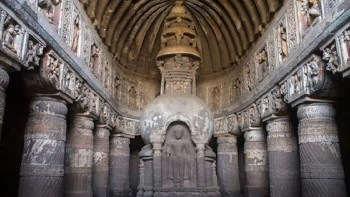
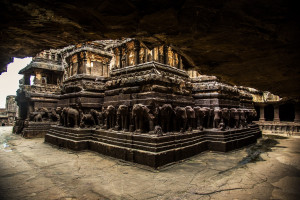
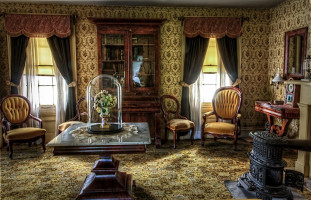

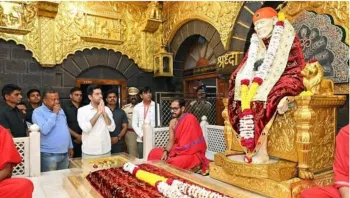
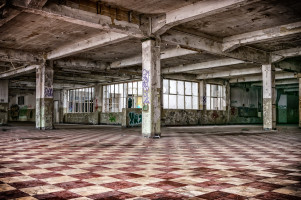


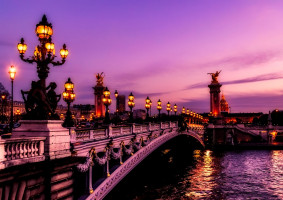
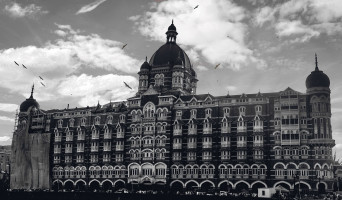
 May
May June
June July
July August
August September
September October
October November
November December
December January
January February
February March
March April
April




